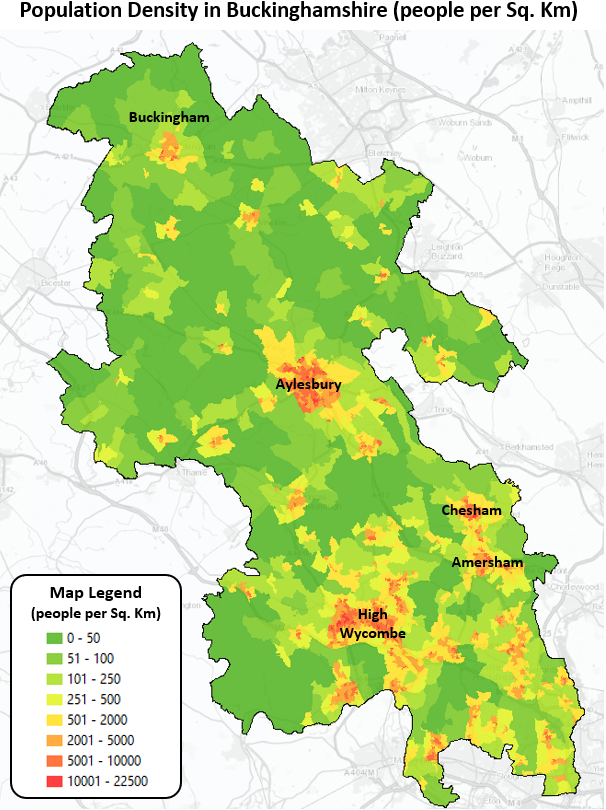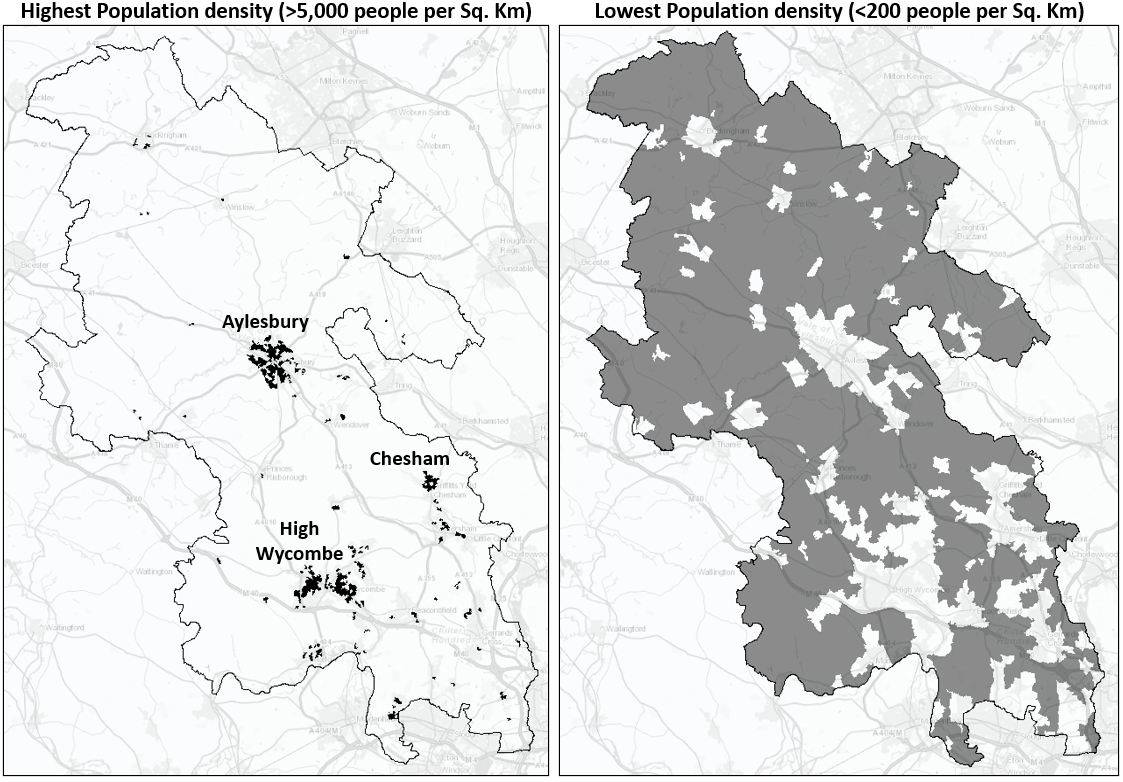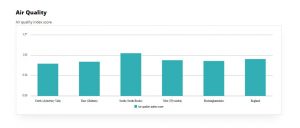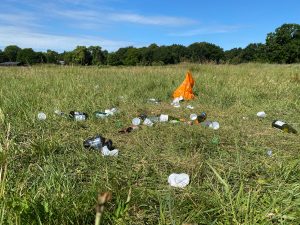The south of the county of Buckinghamshire has a higher population density than the north. The settlements of Chesham, Amersham, Gerrards Cross, Beaconsfield, High Wycombe, and Marlow contribute to a greater number of people per square kilometre. The north of the county is more rural with a higher proportion of farmland and fewer large settlements.
The maps below show population densities using Census output area boundaries which are the smallest and most detailed boundary data that the Office of National Statistics (ONS) provide.

These two maps show which areas in Buckinghamshire have the highest densities of people (more than 5,000 per square kilometre) and the lowest densities (less than 200 people per square kilometre).
The maps illustrate how urban settlements have areas of high-density housing whereas large swathes of rural areas in Buckinghamshire have relatively few dwellings and people.













